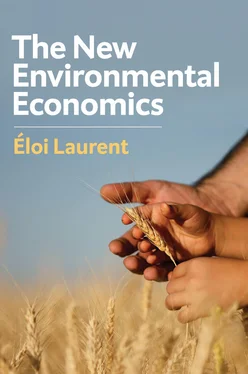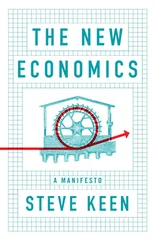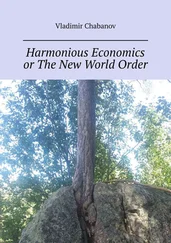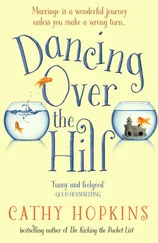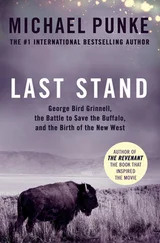In contrast to preservationism, “conservationism” has instead proposed a reasoned management of natural resources exploited for human well-being. The movement’s momentum has greatly benefited from the publication of a major book, Man and Nature by George Perkins Marsh (1801–1882). In it, the ideal of harmony between the natural world and humanity is contested (Marsh writes about “the hostile influence of man,” the true “disturbing agent” of the biosphere) and the picture of a “second Nature” close to what Cicero has envisioned 8emerges. Celebrated as soon as it was published in 1864, the book was republished with an even more explicit title: The Earth as Modified by Human Action in 1874. Lewis Mumford 9claimed in 1924 that Man and Nature was the source of the entire conservation movement.
Gifford Pinchot (1865–1946), the most important figure of the conservationist movement that sought to bring balance back in the relation between “Man and Nature,” promoted the notion of “wise use” of resources and will later become the first head of the US federal forest service, one of the first sectors where the concept of sustainability emerged. This sustainable use of natural resources (to be achieved through government regulation) is not the same as laissez-faire “green” capitalism. The goal of conservationism is not to make money but to ensure that natural resources continue to be available for human enjoyment in the future. Yet, conservationism understood as natural utilitarianism brings about the issue of inter-generational inequality, as this statement of Pinchot in 1909 makes clear: “The first principle of conservation is development, the use of the natural resources now existing on this continent for the benefit of the people who live here now.” 10
The very real opposition between preservation and conservation, that has inspired many environmental debates such as the choice between “strong” and “weak” sustainability, 11has been mythologized over time. Preservationism is as political as it is mystical and conservationism is not as market-oriented as it seems. The truth remains that while Muir and Pinchot were originally friends and allies, they became increasingly alienated until their different philosophies led them to bitterly oppose one another in the battle over the damming of Hetch-Hetchy in Yosemite, 12a fight lost by Muir. It is nevertheless equally true that both movements have insisted on the necessity for environmental governance that Elinor Ostrom was able to document and conceptualize through her re-discovery of the “commons.”
Governing the commons, from Garrett Hardin to Elinor Ostrom
Biologist Garrett Hardin deserves credit for opening the way to the commons framework, showing that not only human arrangements could end up promoting secession and defection but that, moreover, they could lead to collective ruin. In 1968, Hardin published a resounding article in which he deplored the “tragedy of the commons” at work in the world. His reasoning is apparently convincing: The “invisible hand” imagined by Adam Smith 13– according to which, in a market economy, individuals must be concerned only about their personal interests without ever worrying about the fate of others – leads in environmental matters not to the “wealth of nations” promised by Smith but to the ruin of citizens.
The allegory chosen by Hardin is that of shepherds exhausting the pasture they share without owning it, for lack of distributing its use effectively. The logic of Hardin’s demonstration resembles Mancur Olson’s “free rider” problem: If each farmer intends to privatize his gains (the sale of well-fed cows on the market) while socializing its costs (grass consumption), the pasture will be rapidly exhausted (the “invisible hand” ransacking the common resource). Breeders, along with their animals, will soon wither away. Since “injustice is preferable to total ruin” it is wise, according to Hardin, to institute a “mutual coercion, mutually agreed upon.” In other words, to resort to a central authority able to impose its choices on individuals for their own good.
The revolution of the commons, that will give back hope in self-organized efficient cooperation, was born out of a major flaw in the reasoning of Hardin. Hardin evokes a tragedy of the commons, but the illustration he gives rather evokes what we would now call “open access resources.” Common resources, or commons, are resources held under the regime of common property by a human group (a category distinct from both private and public property), while free access resources are non-exclusive, meaning that no one can be stopped from consuming them (see Chapter 6). For example, access to the open sea is free, as too are the fishing areas that are there. This explains why fish stocks are subject to a “tragedy of free access” or even a “tragedy of self-service”: In the last twenty-five years, while ships became increasingly powerful (their fishing capacity increasing considerably), they have returned to their nets fewer and fewer fish simply because stocks are running out (90% of commercial fish stocks are already fully exploited or over-exploited). Like in a Greek tragedy, even though this situation is known to all, fish and fishermen disappear inexorably, year after year.
Hardin’s pasture is thus not a common, and if it were one, it would probably not be over-exploited. It is what Elinor Ostrom has attempted to demonstrate throughout her academic career, which started with the study of water management in California. This inaugural work echoes that of another famous economist among the too-rare women of this discipline, Katharine Coman, published in the first issue of the American Economic Review , in 1911. (Coman highlighted the economic problems posed by irrigation systems, that can be solved by resorting to commons.)
Ostrom will gradually expand her topic to systematically analyze the institutions that allow (or do not allow) sustainable exploitation of natural resources. How do Maine lobster fishermen in the United States distribute fishing rights equitably while taking care of their resource, which is also the source of their sustained livelihood? That’s what Ostrom’s work seems to clarify.
Hardin predicted that individuals’ pursuit of their personal interest would lead to collective impoverishment and that only an outside authority was able to produce and impose standards to bend these behaviors and rescue collective prosperity from individual greed. Ostrom’s masterpiece (1990) 14will demonstrate, conversely, that institutions invented by human communities can themselves foster preservation through cooperation. It is therefore a double invalidation of Hardin’s hypothesis: Efficient cooperation is possible and it is self-determined.
Ostrom starts from a fundamental discovery: In the so-called “public goods” game, individuals cooperate much more than what by standard theory assumes, especially if they have the opportunity to punish free riders. This game is based on a somewhat complex setting. The organizers explain to the participants that, during several consecutive rounds, they will be associated with other players anonymously, each being endowed with a starting bet, say twenty euros. In each round, all players are confronted with two options: either to put their money in a common account or deposit it in a personal account, knowing that the gains of the common account are repaid on each individual count at the end of each round in proportion to the contributions. However, the common account yield is lower than that of personal accounts, so that its profitability depends on the cooperative goodwill of the players (the higher the contributions to the joint account are, the more it will bring back to each player). The profitability results of the common account are announced at the end of each round of play, which allows each player to guess the decisions of others and to adapt his own accordingly for the following turn.
Читать дальше
